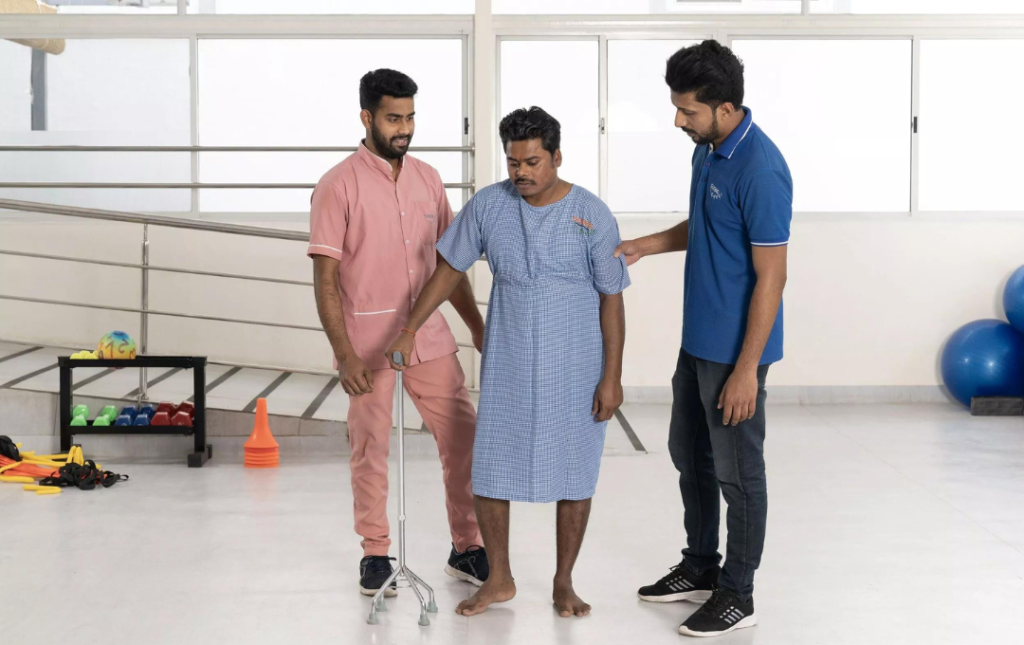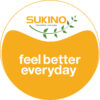A stroke can be a life-altering event, impacting not only physical abilities but also cognitive functions and emotional well-being. The road to recovery can be long and challenging, but effective rehabilitation is crucial. At Sukino Healthcare, we specialize in comprehensive neuro rehabilitation for stroke patients, addressing the multifaceted needs of individuals in their journey toward regaining independence. This article delves into the significance of both physical and neuro rehabilitation, exploring the techniques and benefits associated with these therapeutic interventions.
Understanding Stroke and Its Impact
A stroke occurs when blood flow to the brain is interrupted, leading to brain cell damage. This can result in a variety of symptoms, including weakness or paralysis, speech difficulties, and changes in cognition. The effects of a stroke can vary significantly based on the type, location, and severity. Common challenges faced by stroke survivors include:
- Physical Limitations: Many patients experience weakness, balance issues, or loss of coordination.
- Cognitive Impairments: Stroke can affect memory, attention, and the ability to process information.
- Emotional Changes: Patients may experience depression, anxiety, or mood swings due to the sudden change in lifestyle and capabilities.
Understanding these challenges is vital for developing an effective rehabilitation plan.
The Importance of Rehabilitation
Rehabilitation aims to help stroke survivors regain as much independence as possible. It involves a combination of therapies tailored to individual needs. The primary goals of rehabilitation include:
- Restoring Mobility: Improving strength, coordination, and balance to enhance physical capabilities.
- Enhancing Cognitive Function: Addressing memory, problem-solving, and communication skills.
- Improving Emotional Well-Being: Supporting mental health through counseling and therapeutic interventions.
Both physical and neuro rehabilitation play crucial roles in achieving these goals.
Physical Rehabilitation: Rebuilding Strength and Mobility
Physical rehabilitation focuses on improving the physical abilities of stroke patients. This can include various therapeutic exercises designed to enhance strength, flexibility, and coordination. Here’s a closer look at some common approaches:
1. Therapeutic Exercises
Therapeutic exercises form the backbone of physical rehabilitation. These exercises may include:
- Strength Training: Focusing on major muscle groups to rebuild strength.
- Range of Motion Exercises: Helping to maintain or improve joint flexibility.
- Balance Training: Techniques like standing on one leg or using balance boards to enhance stability.
2. Functional Mobility Training
Functional mobility training aims to improve daily activities, such as walking, standing, or transferring from a bed to a chair. Therapists use assistive devices when necessary and progressively challenge patients to enhance their independence.
3. Gait Training
Many stroke survivors struggle with walking. Gait training involves practicing walking patterns and improving the mechanics of movement. Therapists may use treadmills, parallel bars, or assistive devices to help patients regain their gait.
4. Use of Technology
Advancements in technology have enhanced rehabilitation methods. Robotic exoskeletons, virtual reality, and motion analysis systems provide innovative ways to practice movements and monitor progress.
Neuro Rehabilitation: Addressing Cognitive and Emotional Needs
Neuro rehabilitation focuses on recovery’s cognitive, communicative, and emotional aspects. It addresses challenges related to memory, speech, and emotional regulation, which are essential for overall recovery. Key components include:
1. Cognitive Rehabilitation
Cognitive rehabilitation involves exercises and strategies to improve memory, attention, and executive functions. Techniques may include:
- Memory Exercises: Engaging in activities that enhance recall and retention.
- Problem-Solving Tasks: Practicing decision-making and planning through structured activities.
- Attention Training: Exercises designed to improve focus and concentration.
2. Speech and Language Therapy
Many stroke patients experience difficulties with speech and language. Speech-language pathologists (SLPs) work with patients to improve communication skills through:
- Articulation Therapy: Exercises to improve pronunciation and clarity.
- Language Skills Development: Strategies to enhance comprehension and expression.
- Alternative Communication Methods: Exploring tools such as communication boards or apps for patients with severe impairments.
3. Emotional Support and Counseling
Emotional health is a critical aspect of recovery. Rehabilitation often includes counseling and support groups to help patients cope with the psychological impact of a stroke. Techniques may involve:
- Cognitive Behavioral Therapy (CBT): A structured approach to address negative thought patterns.
- Mindfulness and Relaxation Techniques: Strategies to manage anxiety and stress.
- Family Counseling: Involving family members in the rehabilitation process to enhance support.
The Role of a Multidisciplinary Team
Effective rehabilitation requires a coordinated approach from a multidisciplinary team of healthcare professionals. This team typically includes:
- Physiatrists: Physicians specializing in rehabilitation medicine.
- Physical Therapists: Experts in restoring physical function and mobility.
- Occupational Therapists: Professionals focused on helping patients regain independence in daily activities.
- Speech-Language Pathologists: Specialists in communication and swallowing disorders.
- Neuropsychologists: Professionals addressing cognitive and emotional challenges.
Collaboration among these professionals ensures that all aspects of recovery are addressed, creating a holistic rehabilitation experience for stroke patients.
Setting Realistic Goals
Setting achievable goals is a crucial aspect of rehabilitation. Goals should be specific, measurable, attainable, relevant, and time-bound (SMART). For instance:
- Short-Term Goals: Focus on small, immediate objectives, such as sitting up independently or standing with assistance.
- Long-Term Goals: Aim for broader objectives, such as walking unassisted or returning to work.
Regular reassessment of goals allows for adjustments based on progress and changing needs.
The Role of Family and Caregivers
Family members and caregivers play an essential role in the rehabilitation process. Their involvement can significantly impact a patient’s motivation and emotional well-being. Here are ways they can contribute:
- Encouragement and Support: Providing emotional support during difficult times can boost motivation.
- Participation in Therapy: Attending therapy sessions or engaging in home exercises can reinforce progress.
- Education and Training: Learning about stroke recovery and rehabilitation techniques helps caregivers provide appropriate support.
Conclusion
Neuro rehabilitation for stroke patients is a vital component of recovery, addressing the physical, cognitive, and emotional challenges that arise after a stroke. At Sukino Healthcare, we believe in a comprehensive approach that combines physical and neuro rehabilitation to promote holistic healing. With the right support and resources, stroke survivors can navigate their recovery journey more effectively, regaining independence and improving their quality of life. If you or a loved one is seeking rehabilitation services, reach out to us for tailored support and expert guidance on the path to recovery.
We are India’s first comprehensive continuum care provider. We provide multidisciplinary out of hospital care to acute and post-acute and chronically ill patients at our critical care facilities and your home.


